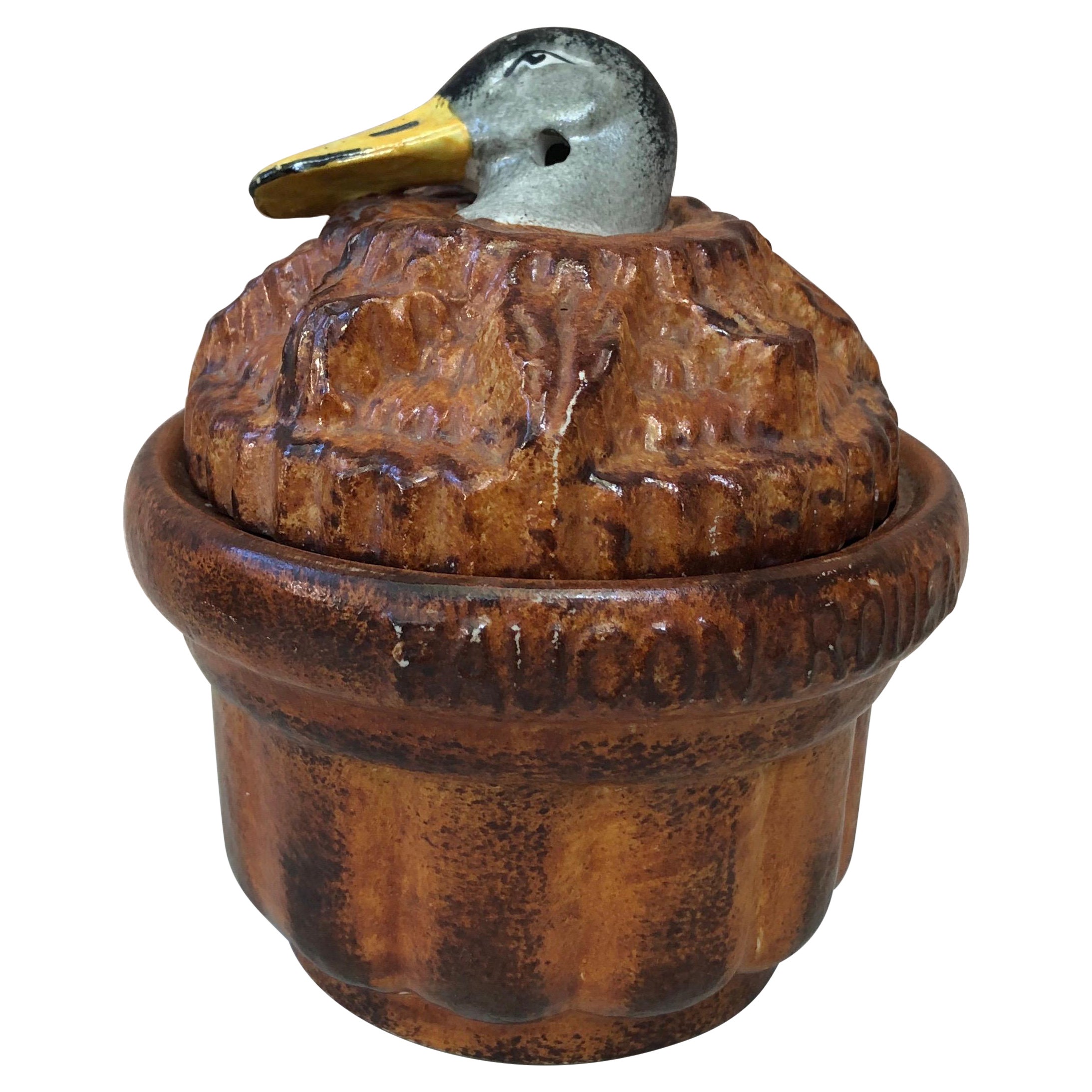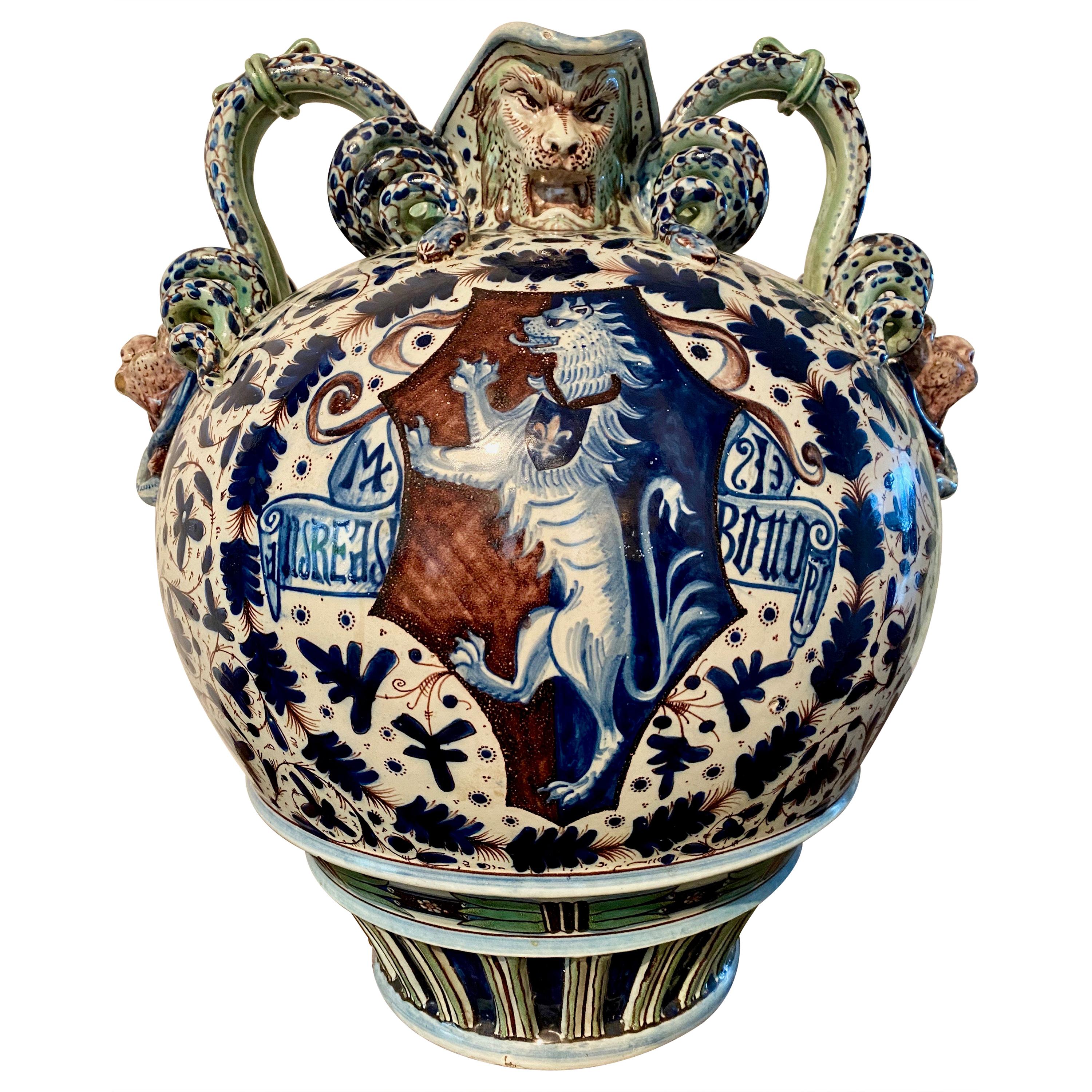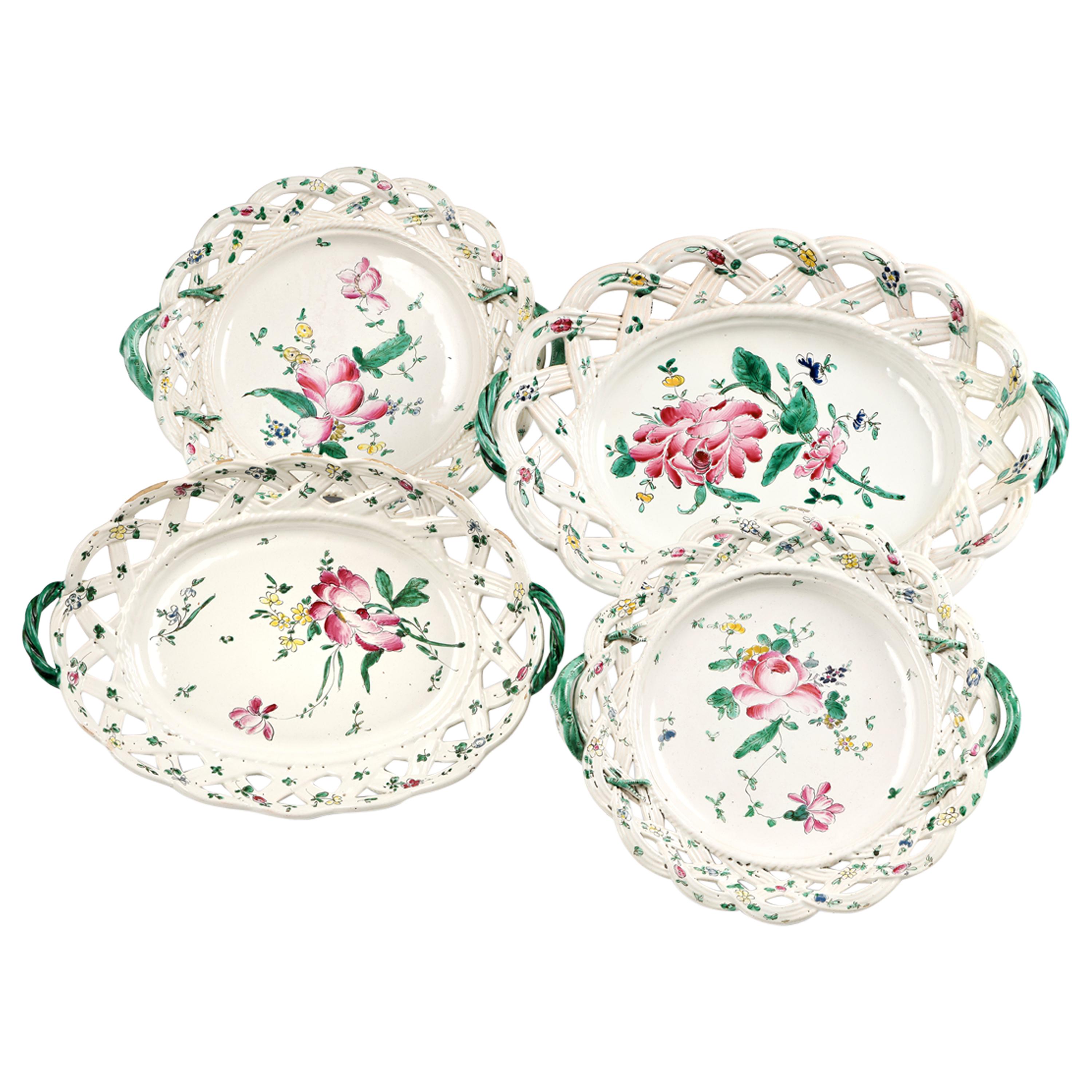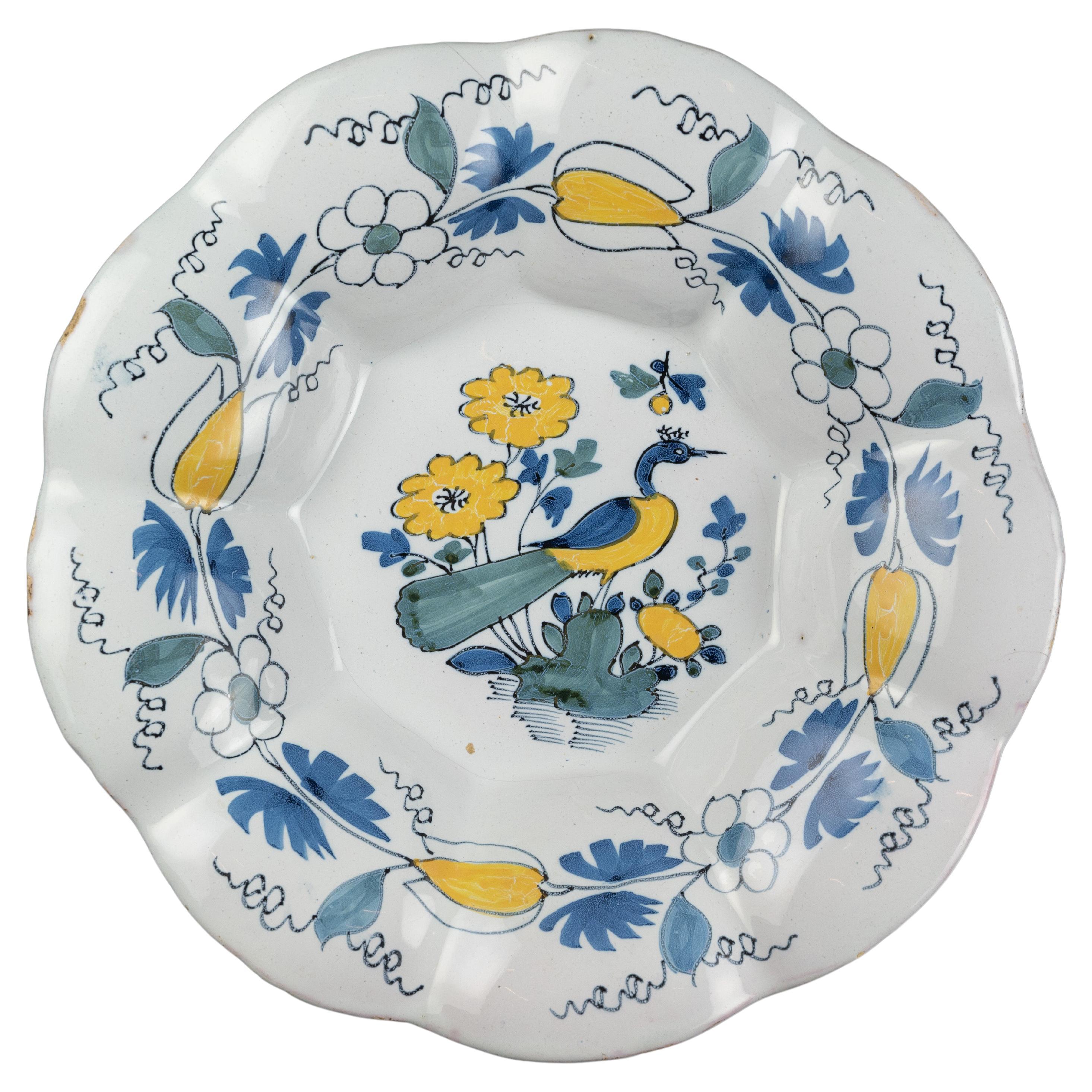Items Similar to Pate Duck Tureen Georges Dreyfus, circa 1900
Want more images or videos?
Request additional images or videos from the seller
1 of 10
Pate Duck Tureen Georges Dreyfus, circa 1900
About the Item
Pate duck tureen signed Georges Dreyfus for Faucon-Rouen circa 1900 in a trompe l'oeil form of pie with duck head handle.
- Creator:George Dreyfus (Artist)
- Dimensions:Height: 7 in (17.78 cm)Diameter: 5.5 in (13.97 cm)
- Style:Rustic (In the Style Of)
- Materials and Techniques:
- Place of Origin:
- Period:1900-1909
- Date of Manufacture:1900
- Condition:
- Seller Location:Austin, TX
- Reference Number:1stDibs: LU2379323034942
About the Seller
5.0
Platinum Seller
These expertly vetted sellers are 1stDibs' most experienced sellers and are rated highest by our customers.
Established in 1995
1stDibs seller since 2016
1,493 sales on 1stDibs
Typical response time: <1 hour
- ShippingRetrieving quote...Ships From: Austin, TX
- Return PolicyA return for this item may be initiated within 1 day of delivery.
More From This SellerView All
- Pate Duck Tureen Georges Dreyfus, circa 1900By George DreyfusLocated in Austin, TXPate duck tureen signed Georges Dreyfus for Faucon-Rouen circa 1900 in a trompe l'oeil form of pie with duck head handle.Category
Antique Early 1900s French Rustic Soup Tureens
MaterialsCeramic
- Unusual Majolica Rooster Frame George Dreyfus, Circa 1890By George DreyfusLocated in Austin, TXUnusual Majolica rooster frame George Dreyfus Circa 1890. Made for advertising.Category
Antique 1890s French Rustic Picture Frames
MaterialsCeramic, Faience
- Majolica Fish Jardiniere George Dreyfus Fontainebleau, Circa 1890By George DreyfusLocated in Austin, TXMajolica fish jardiniere signed George Dreyfus Fontainebleau circa 1890.Category
Antique 1890s French Rustic Planters, Cachepots and Jardinières
MaterialsCeramic
- Set of Five Faience Knife Rests Desvres, circa 1890By DesvresLocated in Austin, TXSet of five knife rests signed Desvres, circa 1890. Colorful with coat of arms and acanthus leaves.Category
Antique 1890s French Country Ceramics
MaterialsFaience
- Small Majolica Pate White Rabbit TureenBy Michel CaugantLocated in Austin, TXSmall Majolica white rabbit pate tureen or box circa 1950 signed Caugant. 2 tureens available.Category
Vintage 1950s French Country Ceramics
MaterialsCeramic, Faience
- Majolica Duck Pitcher Keller & Guerin Saint Clement, circa 1900By Saint-ClémentLocated in Austin, TXLarge Majolica duck in an egg pitcher signed Keller et Guerin Saint Clement, circa 1900. Decorated with a duckling watching a dragonfly.Category
Antique Early 1900s French Art Nouveau Pitchers
MaterialsCeramic
You May Also Like
- Sitting Dog, Delft, circa 1740By DelftLocated in Verviers, BEThe molded dog is sitting on a rectangular base and has its head raised and turned, and his snout opened. He wears a red-dotted collar. The dog is painted in blue, the stand in blue ...Category
Antique Mid-18th Century Dutch Baroque Delft and Faience
MaterialsCeramic, Faience
- Polychrome Chinoiserie Wine Jug, Delft, circa 1680By DelftLocated in Verviers, BEThe polychrome wine jug has an ovoid body on a low spreading foot, a conical neck with spout and a handle with a scroll finish. The jug is painted in purple, yellow and green with a continuous chinoiserie landscape with three Chinese figures. A band with scroll ornaments and circles is applied to the shoulder just below the neck, the neck itself is decorated with two stylized flowers and scroll ornaments. The handle is decorated with stripes and scroll ornaments. Dimensions: height 19 cm / 7.48 in. Multi-coloured chinoiserie landscapes on Delftware were only made for a short period of time, roughly between about 1680 and 1690. Most of the decors have been applied on dishes, lobed dishes, butter pots...Category
Antique Late 17th Century Dutch Baroque Ceramics
MaterialsCeramic
- Cantagalli Armorial Vase, Ulisse Cantagalli, circa 1890By CantagalliLocated in CHCantagalli Armorial Vase, Ulisse Cantagalli (1839-1901) During the 19th century Renaissance-Revival period the Cantagalli Maiolica and Ceramic Fac...Category
Antique 1890s Italian Renaissance Revival Ceramics
MaterialsMaiolica
- Four Italian Ancient Dishes, Lodi, circa 1770-1780By Antonio FerrettiLocated in Milano, ITAssortment of 4 dishes with braided rim Antonio Ferretti Manufacture Lodi, circa 1770-1780 Maiolica polychrome decorated “a piccolo fuoco” (third fire). Measures: 14 x 10 in (35.5 x 25.5 cm); 12.2 x 8.39 in (31 x 21.3 cm); 10.4 x 9.65 in (26.5 x 24.5 cm); 10.8 x 9.61 in (27.5 x 24.4 cm). Weight: 4.4 lb (1.998 kg) State of conservation: some chips due to use on the edges and on the parts in relief. The four different dishes have a foot with a low lip from which extends a wide, flat, slanted rim resembling a basket weave. The small handles are painted green: they resemble wickerwork in the two oval dishes and take the form of a sinuous branch in the round ones. The third fire decoration is inspired by the naturalistic floral botanical patterns on the ceramics produced by the Hannong family in Strasbourg. Here the pattern is defined by the rapidity and subtlety of the brushstrokes and the result is particularly tasteful, characterized by compositional intelligence and pictorial expertise. A main corolla, either a wild or garden rose, is set slightly off center in each well. From this extends a thin stem holding a small secondary bud and there are small field florets dotting the composition to lend volume to the delicate bunch of flowers. On the brim, small polychrome flowers add color to the weave, accompanied by lanceolate leaves of a very intense green. There exist few and very rare examples for comparison with this morphology: a round plate - entirely consistent with those in question - has been dated to around 1775 (S. Levy, Maioliche settecentesche lombarde e venete, Milano 1962, tav. 200). Two other dishes with a basket rim, but with parallel striped brim decoration, were exhibited in the 1995 exhibition on Lodi ceramics; the attribution to the Lombard town near Milan is therefore almost exclusively derived from the decoration called "alla rosa contornata" or "alla vecchia Lodi" and constitutes one of the most popular decorations during the eighteenth century. (M. L. Gelmini, in Maioliche lodigiane del '700 (cat. mostra Lodi), Milano 1995, pp. 31 p. 162-163 nn. 181-182). This decorative choice represented a strong point of the Lodi factory, which established itself thanks to the vivid nature of the colors made possible by the introduction of a new technique perfected by Paul Hannong in Strasbourg and which Antonio Ferretti introduced in Italy. This production process, called “piccolo fuoco” (third fire), allowed the use of a greater number of colors than in the past; in particular, the purple of Cassius, a red made from gold chloride, was introduced. Its use allowed for many more tones and shades, from pink to purple. The Ferretti family had started their Maiolica manufacturing business in Lodi in 1725. The forefather Simpliciano had started the business by purchasing an ancient furnace in 1725 and, indeed, we have evidence of the full activity of the furnaces from April of the same year (Novasconi-Ferrari-Corvi, 1964, p. 26 n. 4). Simpliciano had started a production of excellence also thanks to the ownership of clay quarries in Stradella, not far from Pavia. The production was so successful that in 1726 a decree of the Turin Chamber came to prohibit the importation of foreign ceramics, especially from Lodi, to protect internal production (G. Lise, La ceramica a Lodi, Lodi 1981, p. 59). In its initial stages, the manufacture produced maolicas painted with the “a gran fuoco” (double fire) technique, often in turquoise monochrome, with ornamentation derived from compositional modules in vogue in Rouen in France. This was also thanks to the collaboration of painters like Giorgio Giacinto Rossetti, who placed his name on the best specimens next to the initials of the factory. In 1748 Simpliciano made his will (Gelmini, 1995, p. 30) appointing his son Giuseppe Antonio (known as Antonio) as universal heir. After 1750, when Simpliciano passed away, Antonio was directly involved in the Maiolica factory, increasing its fortunes and achieving a reputation on a European level. Particularly important was the aforementioned introduction in 1760 of the innovative “a piccolo fuoco” (third fire) processing, which, expanding the ornamental repertoire with Saxon-inspired floral themes, could commercially compete with the German porcelains that had one of its most renowned offerings in the naturalistic Deutsche Blumen. Antonio Ferretti understood and promoted this technique and this decoration, proposing it in a fresher and more corrective version, less linked to botanical tables...Category
Antique 1770s Italian Neoclassical Ceramics
MaterialsMaiolica
- Polychrome Lobed Dish with Peacock. Delft, circa 1680By DelftLocated in ROSSUM, GEPolychrome lobed dish with peacock. Delft, circa 1680 Dimensions: diameter 34,7 cm / 13.66 in. The polychrome lobed dish is composed of nine wide lobes...Category
Antique Late 17th Century Dutch Baroque Delft and Faience
MaterialsCeramic, Faience
- Ancient Maiolica Plates Pasquale Rubati, Milan Circa 1770-1780By Pasquale RubatiLocated in Milano, ITFive oval maiolica dishes with pierced edge Manufacture of Pasquale Rubati Milan, 1770-1780 Three small oval dishes 10.23 in x 7.67 in (26 cm x 19.5 cm) Two large oval dishes 10.82 in x 8.85 in (27.5 x 22.5 cm) lb 3.5 (kg 1.8) State of conservation: intact The five dishes of different sizes have an oval shape, a mixtilinear edge and a molded polylobed shape with a surface enriched with a relief weave motif extending to the brim and forming a perforated basket...Category
Antique 1770s Italian Rococo Ceramics
MaterialsMaiolica





